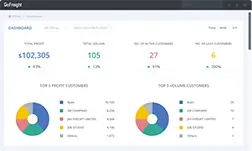Operating a freight forwarding business involves a number of different tasks and responsibilities. Some of the key steps involved in operating a freight forwarding business include:
- Establishing relationships with carriers, such as airlines, trucking companies, and shipping lines, to secure the best rates and services for your clients.
- Developing a network of contacts and partners in key locations around the world to facilitate the smooth movement of goods. Providing customs brokerage services to help clients navigate the complex rules and regulations governing the import and export of goods.
- Offering a range of value-added services, such as cargo insurance, warehousing, and distribution, to provide a comprehensive solution for your clients.
- Investing in technology and systems to manage your operations and provide real-time tracking and visibility for your clients.
- Providing excellent customer service to build long-term relationships with your clients and maintain a competitive edge in the market.
Running a successful freight forwarding business requires a combination of strong industry knowledge, excellent communication and negotiation skills, and the ability to adapt to changing market conditions. It is important to stay up to date with industry developments and regulations to ensure that your business remains competitive and compliant.





